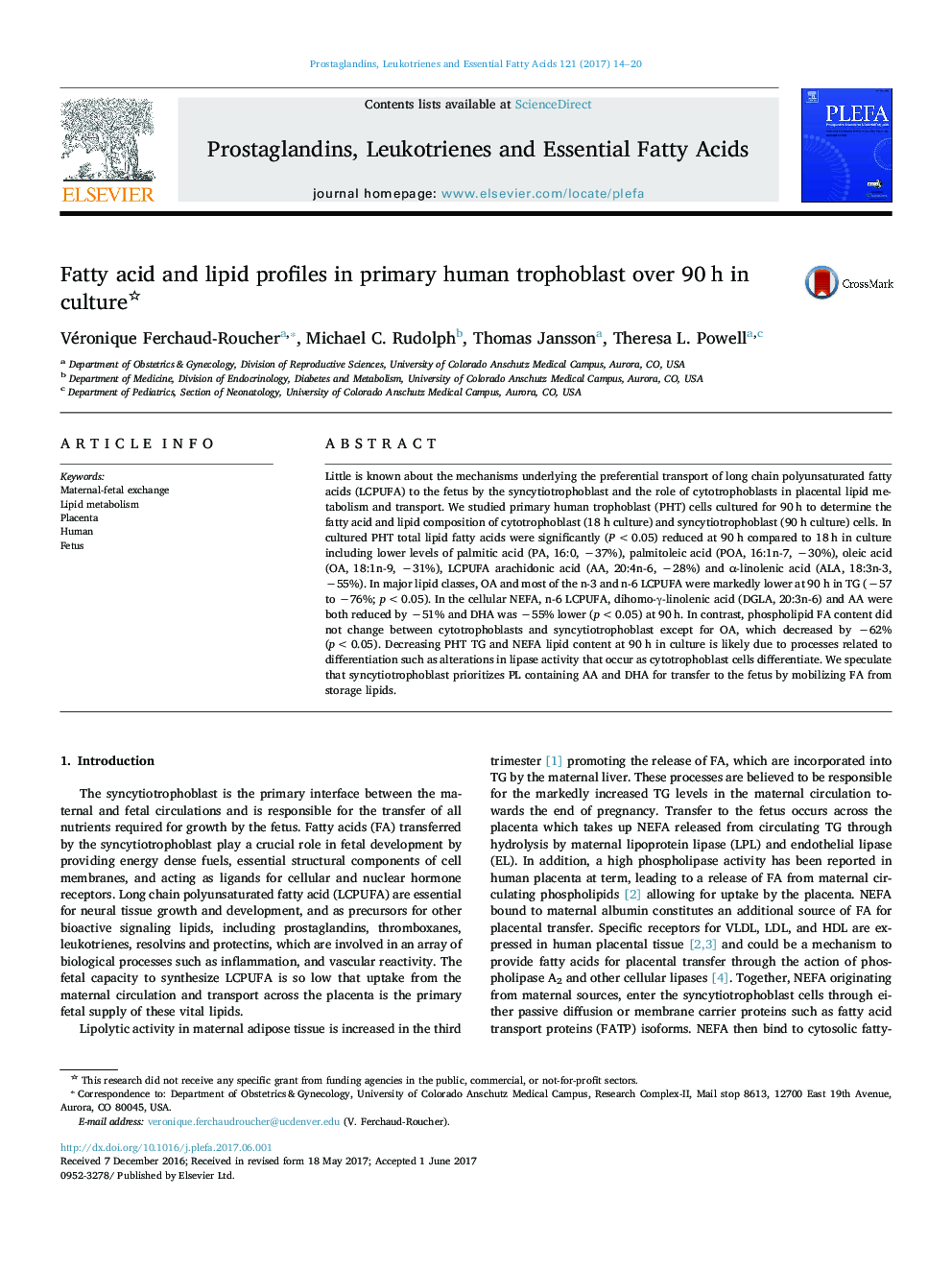| Article ID | Journal | Published Year | Pages | File Type |
|---|---|---|---|---|
| 5584928 | Prostaglandins, Leukotrienes and Essential Fatty Acids (PLEFA) | 2017 | 7 Pages |
Abstract
Little is known about the mechanisms underlying the preferential transport of long chain polyunsaturated fatty acids (LCPUFA) to the fetus by the syncytiotrophoblast and the role of cytotrophoblasts in placental lipid metabolism and transport. We studied primary human trophoblast (PHT) cells cultured for 90 h to determine the fatty acid and lipid composition of cytotrophoblast (18 h culture) and syncytiotrophoblast (90 h culture) cells. In cultured PHT total lipid fatty acids were significantly (P < 0.05) reduced at 90 h compared to 18 h in culture including lower levels of palmitic acid (PA, 16:0, â37%), palmitoleic acid (POA, 16:1n-7, â30%), oleic acid (OA, 18:1n-9, â31%), LCPUFA arachidonic acid (AA, 20:4n-6, â28%) and α-linolenic acid (ALA, 18:3n-3, â55%). In major lipid classes, OA and most of the n-3 and n-6 LCPUFA were markedly lower at 90 h in TG (â57 to â76%; p < 0.05). In the cellular NEFA, n-6 LCPUFA, dihomo-γ-linolenic acid (DGLA, 20:3n-6) and AA were both reduced by â51% and DHA was â55% lower (p < 0.05) at 90 h. In contrast, phospholipid FA content did not change between cytotrophoblasts and syncytiotrophoblast except for OA, which decreased by â62% (p < 0.05). Decreasing PHT TG and NEFA lipid content at 90 h in culture is likely due to processes related to differentiation such as alterations in lipase activity that occur as cytotrophoblast cells differentiate. We speculate that syncytiotrophoblast prioritizes PL containing AA and DHA for transfer to the fetus by mobilizing FA from storage lipids.
Related Topics
Life Sciences
Biochemistry, Genetics and Molecular Biology
Clinical Biochemistry
Authors
Véronique Ferchaud-Roucher, Michael C. Rudolph, Thomas Jansson, Theresa L. Powell,
